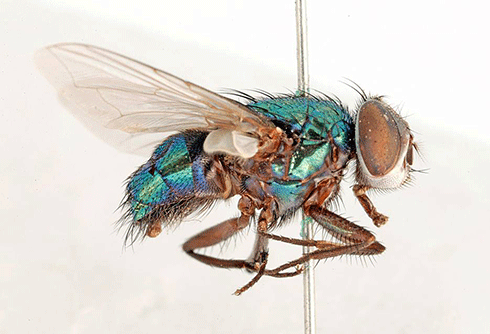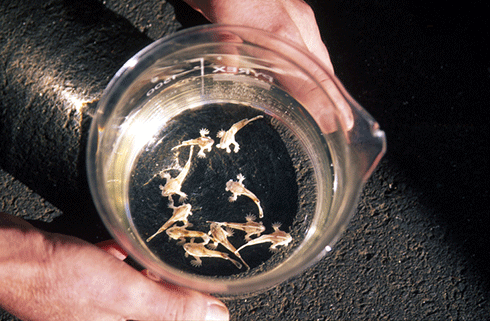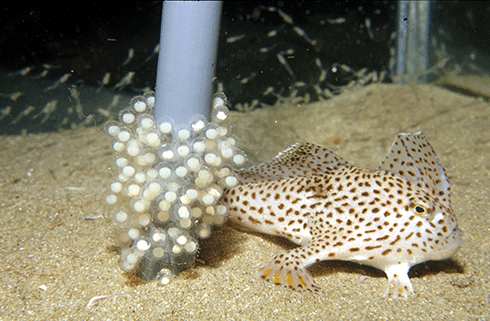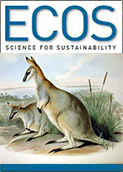
|
Published: 2 June 2014
Why collect?
CSIRO is the custodian of many large biological collections – of insects, fish, seeds, plants, wildlife and algae – that contribute to national and international scientific knowledge. Why are specimen collections so important? Dr Jeff Leis, from the Australian Museum, explains.
Every year, the question most commonly asked at the Australian Museum’s Open Day is: why do you need so many specimens in jars? Scientists too have recently queried the wisdom of collections.
There are many answers to the question, and they can vary depending on the types of animals, so I’ll focus on fish – the group I know best.
Scientific collections are used to address many subjects, ranging from biodiversity inventories to climate change, and this contributes to a need for a range of and life-history stages from different places and times.
At present, somewhat more than 5000 species of fishes are known from Australian waters – more than 75 per cent of Australia’s vertebrate fauna.
But the age of discovery of the Australian fish fauna is far from over. Ichthyologists discover a fish species previously unknown in Australian waters at the rate of about one per week, and this rate has remained relatively constant for decades.
To document these newly discovered Aussies, specimens are needed from which to take measurements, counts, and DNA samples, and to describe their colour and other features.
A photo, or even several, is usually not enough to be certain that a fish is really new. This is particularly so in the tropics, where there are many closely related species and often strong differences between sexes; and for smaller, similar-looking species, which account for the bulk of species in many fish families.
The initial reason for maintaining scientific collections is to establish how many species there are, to describe them and to determine their relationships: in short, to conduct taxonomic research. But collections are also used for many other purposes beyond documentation of our fauna.
Studies of food habits, reproduction, functional morphology, community structure and parasites are also conducted on curated specimens. The effects of climate change can be investigated using specimens by studying how distributions of various species have changed over time, and measuring how body size has changed.
We can even investigate how pollution has changed over time by measuring contaminants such as mercury in museum specimens collected 20, 50 or even 100 years ago.
Most marine fish species, like most marine invertebrates and terrestrial insects, have a larval stage that differs greatly in morphology from the adult, and that frequently lives in a different place, eats different foods and has different behaviours. In order to study the development of larvae, how they grow and change, how to identify them and what this tells us about their relationships, large numbers of specimens are needed, because the essence of larval development is change, and a 5-day-old larva will be very different from a 15-day-old larva.
Large numbers of fish larvae are collected in fishery biology studies, ecological studies and environmental impact studies, at very large cost in terms of ship time, and staff time to sort and identify them.
In Australia, Regional Larval Fish Archives have been established at state museums and the CSIRO National Fish Collection. The valuable larvae from such studies are deposited into the archives, where they are available in future for studies on how fish populations have changed over time, or with changing environmental conditions, for example.
All scientific collecting is overseen by Ethics Committees, and requires permits issued by responsible government authorities. In fact, scientific collecting is much more regulated than are either commercial or recreational fishing. There are many reasons why researchers collect specimens, and many tight controls over how it is done.
Museums and other research organisations collect specimens and manage those collections as a resource for not only Australians, but also the world. Scientific collections are available for study by bona fide researchers at home and overseas for research to help answer questions about natural history and evolution, and to help solve conservation problems.
They and their curators are a vital resource.
Dr Jeffrey M Leis is an Honorary Research Professor at the Institute for Marine and Antarctic Studies (IMAS), University of Tasmania, Hobart, and a Senior Fellow, Ichthyology, at the Australian Museum. This article from the Australian Museum’s blog is reproduced with the author’s permission. Read more on the current scientific debate about biological collections here.






